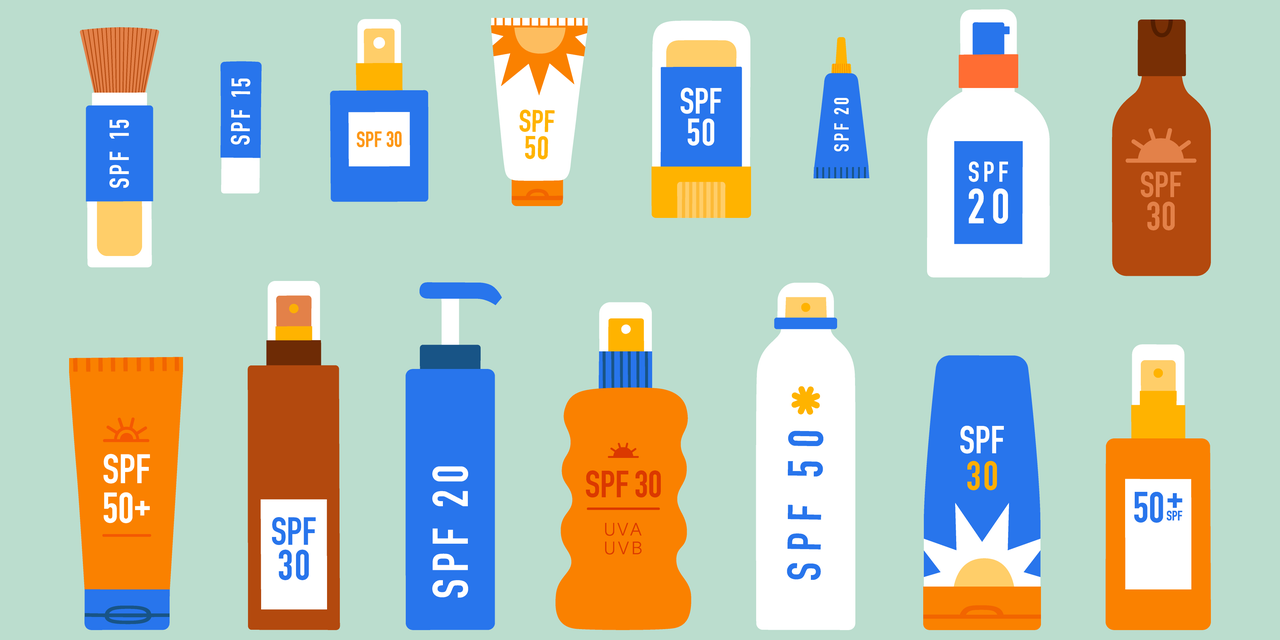At some point, you’ve probably been nagged by your doctor, an overly concerned parent, or a well-meaning health site (hello!) to wear SPF. Yes, sun protection really is that important. However, few of us understand the science behind how sunscreen works to save our skin.
Cream or lotion, spray or stick—sunscreen, in any of its forms, should be an essential part of your skin care routine. Its most important benefit is, of course, shielding you from the sun’s ultraviolet (UV) rays, which in turn can reduce your risk of developing skin cancer (including melanoma, the deadliest form) and ward off painful burns when you spend a little too much time outside.1 2 And if all that isn’t enough to convince you that SPF is queen, research has also shown that sunscreen can prevent and lighten hyperpigmentation (a.k.a. dark spots) and diminish signs of aging, like wrinkles and loss of elasticity.3 4
“Sunscreen is a necessary staple for all skin types, textures, and colors,” Mona Gohara, MD, board-certified dermatologist and associate professor at Yale School of Medicine, tells SELF. Yes, all—whether your face is dry or oily, dark or light, quick to tan or burn. While many of us are pretty diligent about slathering on SPF products before a beach day or an outdoor hang, you should be wearing sunscreen every single day and all year round, come rain or shine, Dr. Gohara urges.
If you’re wondering precisely why—and how—you must incorporate this holy grail into your daily routine, we’ve got you, well, covered. SELF asked dermatologists to break down sunscreen’s seemingly magical ability to deliver on both its health and beauty promises.
How does sunscreen work?| Sun tan lotion vs. sunscreen | What does SPF mean? | How much sunscreen should you use? | How to reapply sunscreen
How does sunscreen work, exactly?
READ RELATED: Frozen Fruit Recalled From Major Retailers Nationwide Due to Possible Listeria Contamination
There are two types of sunscreen—mineral (a.k.a. physical) and chemical—and both safeguard you from the sun’s harmful UVA rays (responsible for premature aging) and UVB rays (which cause sunburns and play the biggest role in the development of skin cancer), Susan Massick, MD, dermatologist and assistant professor at Ohio State University College of Medicine, tells SELF.5 The key difference between mineral and chemical formulas, however, are the active ingredients used to protect your skin cells.
“Mineral SPF products primarily use zinc oxide or titanium dioxide, which physically block the sun’s rays before they penetrate your skin,” Dr. Massick explains. (Hence, the term “sunblock”). Chemical ones, on the other hand, absorb the heat from UV rays, thanks to ingredients like avobenzone and octisalate, among various others.6 7 1 Think of it like a shield (mineral) versus a sponge (chemical).
You might be wondering, “Well, which one is better?” The short answer: It really comes down to personal preference, as SELF previously reported. “Most people won’t have a negative or allergic reaction to mineral sunscreens, so they’re generally safe for sensitive skin types,” Dr. Gohara says. However, because zinc and titanium dioxide are white in color, and mineral sunscreens tend to be thicker, they may also leave behind an unwanted, ghostly white cast—especially on darker skin tones. (More on that below.)7 No matter your formula of choice, just make sure the label specifies “broad-spectrum” coverage, so you know you’re protected against both UVA and UVB rays.
Back to top
So…is “suntan lotion” the same as sunscreen?
Let’s be real: Some of us (me!) want to achieve a sunkissed glow—without the damage, of course. You’d think that’s what tanning lotions are for, but sorry to burst your bubble: “Suntan lotions, which are products with very low SPF levels, between four and 10, are not sunscreens,” Dr. Massick clarifies. “They’re not strong enough to protect your skin from sun exposure.”





